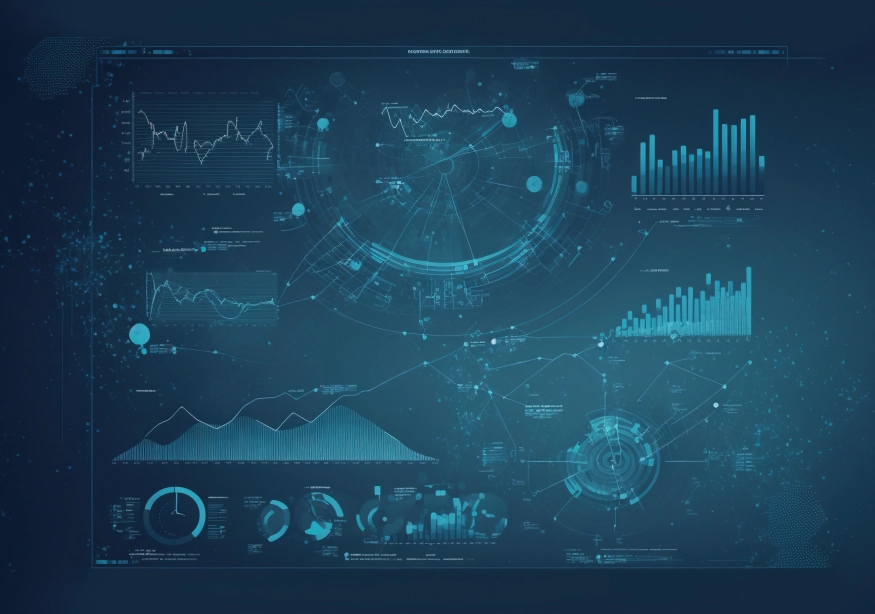Content Management Systems (CMS) shouldn't have impeding influence over your design and development decisions, creative execution, and (ultimately) your workflows. After all, aren't they called content management systems? So, to help you liberate your sites, apps, and workflows, we wanted to introduce you to the concept of a headless CMS: An API-driven content model that lets you design and build projects however you’d like. Let your CMS get back to the one thing it knows how to do best: Managing content.
In this blog:
What is a CMS? . . . Answered in 3 minutes
The Problem
CMS dependency is suffocating your enterprise
When you think of CMS, WordPress or Drupal probably come to mind (after all, they only make up 20% of the internet) and for my enterprise friends, maybe Sitecore or Adobe Sites (CQ).
All of these are great tools to help manage your web content, but as the web has matured and smarter design practices like Atomic Design, Component-Driven Design, and Design Patterns have come into play, the traditional way of approaching CMS has quickly become a major blocker, often impinging upon how designers and developers’ do their work.
Here’s an example of what classic CMS dependency looks like:
Imagine you are managing content for 2 websites, 3 native apps, and an event kiosk. With a traditional CMS–i.e., a monolithic system that is baked into your site–your designers, writers, and editors are forced to log and store their content changes in a database, which then delivers said changes to where your developers build out templates and designs that reflect on your site’s presentation layer, or the web pages themselves.
This process is rigid, clunky, outdated, and provides no fluid workflow between creative teams and your hoodied genius devs. Rigidity this inhibitory is toxic to both creativity and productivity, and if left unattended can affect your entire enterprise.
So, instead of having a CMS that’s baked into your website, wouldn’t it be better if you could control that content from a single location and separate it from the design, simply accessed through an API or SDK? Call us a bunch of weirdos, but the last time we checked, we thought CMS stood for Content Management System. When did CMS platforms become about controlling design templates, applications, code syntax, workflows, and everything else?”
Well, unsheathe your katana, because it’s time to cut off your head.
The Solution
Just cut off your head
Imagine content managed in a single location while it populates your entire enterprise of apps, websites, and any digital entity, giving designers and developers the freedom to design and build how they want, where they want. This is a Headless CMS, or, a content management system that simply manages your content without getting in the way of how you design or build your sites, and doesn’t dictate where you host them.
But why is called a “headless” CMS?
A headless CMS works exactly the same way as a traditional CMS, with one vital difference. When you’ve gone headless, your content is decoupled from the presentation layer of your site (again, the web pages themselves), opening up a whole new realm of fluidity for your content management needs. In other words, the front-end of your site is now separate from the backend, giving your teams the flexibility and freedom they need to perform at their highest capacity. No more suffocation–your enterprise can now breathe.
As with a traditional CMS, headless content creation is fed into a database, with the only difference being that headless content is web-driven, utilizing an application programing interface (API) to deliver your content in raw data format. Because of the API, your content is seamlessly distributed to any website, app, digital kiosk, etc., that you want to populate.
So, a headless CMS is “headless” because it decouples your content from the presentation layer–the face, the head–of your site, allowing you to manage and create content with more freedom while simultaneously freeing up your creative and development teams’ web-facing potentials.
Subtract the head and the benefits add up
Okay, so let’s say you’ve done what we’ve recommended and cut the head off of your current CMS—what exactly do you need to know about your new headlessness? Well, the results vary across company types and sizes, but generally it’s safe to say that, as soon as the head rolls off the chopping block, here’s what you’ll experience:
Manage content, control customization
As stated above, a headless CMS separates the front-end presentation of content from the back-end management, allowing for more control and customization of user experiences on both sides of your site.
Integrate with other systems
An API-first approach allows developers to easily integrate your site with other systems and technologies. Not only can this drastically improve your enterprise’s marketing initiatives, but also gives developers the chance to focus more on design and usability instead of trying to make integrations work.
Scale
Pretty quickly, you’ll notice that populating your connected websites, webapps, and mobile apps is more streamlined than ever. Because a headless CMS allows you to easily deliver content to multiple channels and devices without bottlenecking somewhere along your team’s workflow, you’ll gain the ability to more effectively leverage your content’s potential. Ensure your enterprise’s story gets heard.
Improve experiences on all ends of your site
Due to content decoupling and the API-first approach, a headless CMS can offer improved performance, providing both front- and backend users with a higher quality experience.
Become future-proof
A headless CMS enables integration and connection with new channels and devices that can easily be added without having to reformulate your entire system—key for both growth and rebranding.
Say no to hackers
Aside from improved development, design, and user experience, decoupling your content from the presentation layer includes the extra benefit of improved security. When your content is decoupled from the presentation layer, your site becomes impervious to hackers because they no longer have anything to exploit. The content simply isn’t accessible; there’s no head for them to use to get into your site.
Help your developers make your designers’ dreams come true… and vice versa
Last but not least, a headless CMS can facilitate better collaboration between the development and design teams. When developers no longer have to deal with page templates and other hardcoded designs, they’ll have more time to help your designer’s creative dreams come true. In other words, they’ll have more time to say yes to designers’ incessant avalanches of ideas, leading to higher production rates and broader experimentation to help guide the future of your company.
When should you go headless?
In all seriousness, investing in an expensive ecosystem is always a tough decision. It doesn’t matter if it’s a CMS, CRM, MAS, etc…these decisions are often stressful, because you just don’t know what the future holds.
Startups or enterprise organizations alike, taking a decoupled approach to content will prevent fragmented sites and apps from popping up. This also frees your developers from committing to one development platform or framework. Of course, should you want to enforce a specific framework for your development standards where you still can, but at least you now have the choice to change when necessary.
Just as you plan for growth in your company projections, and product roadmaps, it’s important to set up your web environments in a place where it can grow. If you don’t, then your only options are to re-platform/migrate or rebuild from the ground up. Both of which are expensive and time consuming.



